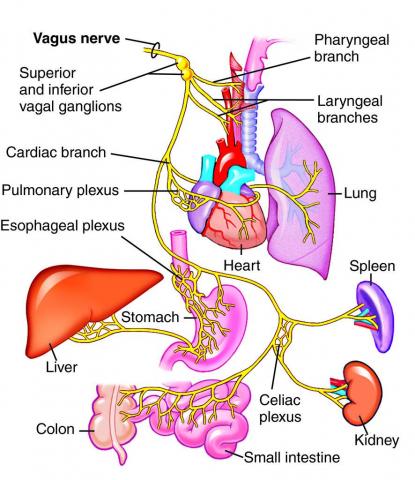
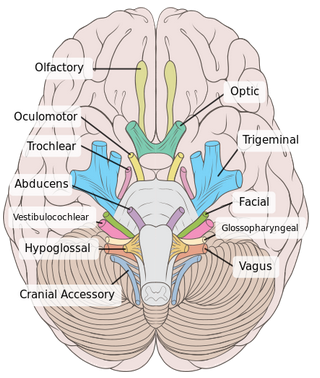
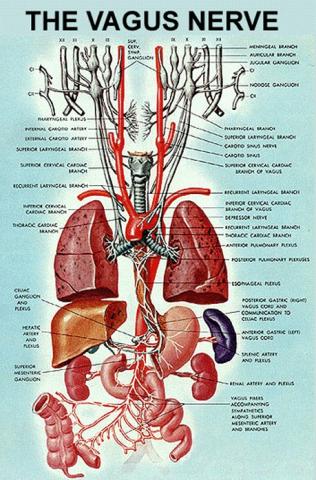
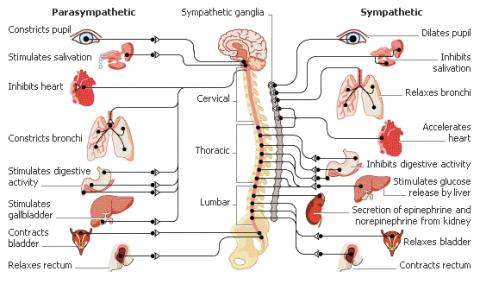
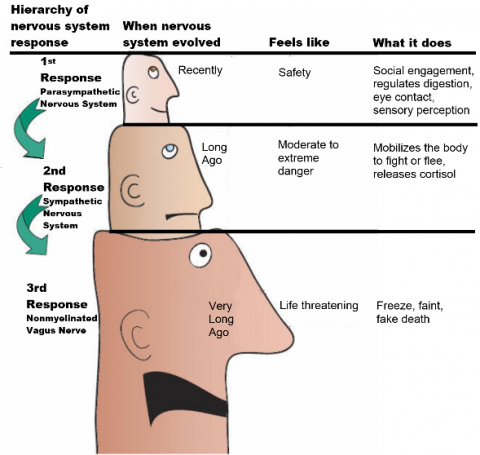
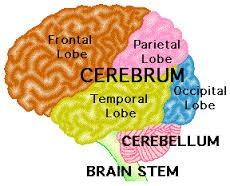
The Vagus Nerve - Core Piece of the Autism Puzzle - Part 1 - What is this and why is it important?
Posted by Susan Bennett, Autism Coach on March 20, 2015
The vagus nerve is the longest of twelve pairs of nerves that originate in the brain, serving as the brain's central command in the fight against stress, inflammation and toxicity. The vagus helps regulate our "fight or flight" response, digestion, detoxification, various aspects of heart rate and blood pressure. Recent research indicates it also regulates our immune system and provides us with a neurological infrastructure that determines many of our emotional responses, enabling us to empathize with, bond with, communicate with and relate to others.
The longest nerve the body, the vagus nerve begins at brainstem, located near the base of the skull, and has branches which extend throughout the head and two branches which travel down the each side of the neck and extend throughout the body. It actually consists of nerve pairs; one nerve sends and the other nerve receives information. When it is under-active and/or under-developed, it is turning out to be one of the major contributors to symptoms of autism. It is part of what is called the autonomic nervous system, which automatically regulates functions that our mind does not consciously control.
The Autonomic Nervous System - Your Body on Autopilot
The simplified diagram below shows some of the areas of the body the vagus nerve interacts with. It is part of the autonomic nervous system. The autonomic nervous system functions independently of our conscious mind, controlling functions essential to survival. The autonomic nervous system consists of two components: the parasympathetic and sympathetic nervous systems. The parasympathetic system is responsible for stimulation that occurs when the body is at rest, especially after eating, including sexual arousal, salivation, tears, and digestion. The sympathetic nervous system is responsible for stimulating activities associated with the fight or flight response to perceived danger. The vagus nerve is part of the parasympathetic nervous system and inhibits the flight or fight response. The vagus nerve contains 80-90% of the body’s sensory neurons (also called afferent neurons) which provide information to the central nervous system/brain from organs and other parts of the body.
The longest nerve the body, the vagus nerve begins at brainstem, located near the base of the skull, and has branches which extend throughout the head and two branches which travel down the each side of the neck and extend throughout the body. It actually consists of nerve pairs; one nerve sends and the other nerve receives information. When it is under-active and/or under-developed, it is turning out to be one of the major contributors to symptoms of autism. It is part of what is called the autonomic nervous system, which automatically regulates functions that our mind does not consciously control.
The Autonomic Nervous System - Your Body on Autopilot
The simplified diagram below shows some of the areas of the body the vagus nerve interacts with. It is part of the autonomic nervous system. The autonomic nervous system functions independently of our conscious mind, controlling functions essential to survival. The autonomic nervous system consists of two components: the parasympathetic and sympathetic nervous systems. The parasympathetic system is responsible for stimulation that occurs when the body is at rest, especially after eating, including sexual arousal, salivation, tears, and digestion. The sympathetic nervous system is responsible for stimulating activities associated with the fight or flight response to perceived danger. The vagus nerve is part of the parasympathetic nervous system and inhibits the flight or fight response. The vagus nerve contains 80-90% of the body’s sensory neurons (also called afferent neurons) which provide information to the central nervous system/brain from organs and other parts of the body.